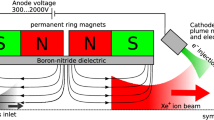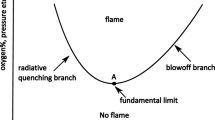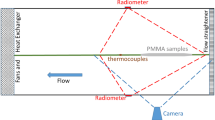Abstract
This work analyzes a novel MEMS-based architecture of submillimeter size thruster for the propulsion of small spacecrafts, addressing its preliminary characterization of performance. The architecture of microthruster comprises a setup of miniaturized channels surrounding the solid-propellant reservoir filled up with a high-energetic polymer. These channels guide the hot gases from the combustion region towards the nozzle entrance located at the opposite side of the thruster. Numerical simulations of the transient response of the combustion gases and wafer heating in thruster firings have been conducted with FLUENT under a multiphysics modelling that fully couples the gas and solid parts involved. The approach includes the gas-wafer and gas-polymer thermal exchange, burnback of the polymer with a simplified non-reacting gas pyrolysis model at its front, and a slip-model inside the nozzle portion to incorporate the effect of gas-surface and rarefaction onto the gas expansion. Besides, accurate characterization of thruster operation requires the inclusion of the receding front of the polymer and heat transfer in the moving gas-solid interfaces. The study stresses the improvement attained in thermal management by the inclusion of lateral micro-channels in the device. In particular, the temperature maps reveal the significant dependence of the thermal loss on the instantaneous surface of the reservoir wall exposed to the heat flux of hot gases. Specifically, the simulations stress the benefit of implementing such a pattern of micro-channels connecting the exit of the combustion reservoir with the nozzle. The results prove that hot gases flowing along the micro-channels exert a sealing action upon the heat flux at the reservoir wall and partly mitigate the overall thermal loss at the inner-wall vicinity during the burnback. The analysis shows that propellant decomposition rate is accelerated due to surface preheating and it suggests that a delay of the flame extinction into the reservoir is possible. The simulated operation of the thruster concept shows encouraging performance.
Similar content being viewed by others
References
Youngner D.W., Lu S.T., Choueiri E., Neidert J.B., Black III R.E., Graham K.J., Fahey D., Lucus R., Zhu X.: MEMS Mega-pixel Micro-thruster Arrays for Small Satellite Stationkeeping, in Proc. 14th Annual -USU Conference on Small Satellites, North Logan, USA, SSC00-X-2, (2000).
Rossi C., Briand D., Dumonteuil M., Camps Th., Quyên Pham Ph., de Rooij N.F.: Matrix of 10×10 Addressed Solid Propellant Microthrusters: Review of the Technologies, Sens. Actuators A, Vol. 126, No 1, pp. 241–252, (2006).
Rossi C., Larangot B., Lagrange D., Chaalane A.: Final Characterization of MEMS-based Pyrotechnical Microthrusters, Sens. Actuators A, Vol. 121, No 2, pp. 508–514, (2005).
Zhang K.L., Chou S.K., Ang S.S.: Performance Prediction of a Novel Solid-Propellant Micro-thruster, J. Propul. Power, Vol. 22, No 1, pp. 56–63, (2006).
Tanaka S., Hosokawa R., Tokudome S., Hori K., Saito H., Watanabe M., Esashi M.: MEMS-Based Solid Propellant Rocket Array Thruster with Electrical Feedthroughs, Trans. Japan Soc. Aero. Space Sci, Vol. 46, No 151, pp. 47–51, (2003).
Tang, K.C., Brewster M.Q.: Nonlinear Dynamic Combustion in Solid Rockets: L* Effects, J. Propul. Power, Vol. 17, No 4, pp. 909–917, (2001).
Moríñigo J.A., Hermida-Quesada J.: Numerical Modelling and Analysis of the Burning Transient in a Solid Propellant Micro-Thruster, in Proc. NSTI NanoTech, Vol. 3, pp. 438–441, Boston, USA, (2008).
Fluent Inc., Fluent 6.3 UDF Manual. Lebanon, (2007).
Moríñigo J.A., Hermida-Quesada J., Caballero-Requena F.: Slip-Model Performance for Under-expanded Microscale Rocket Nozzle Flows, J. Therm. Sci, Vol. 16, No 3, pp. 223–230, (2007).
Moríñigo J.A., Hermida-Quesada J.: Solid-gas Surface Effect on the Performance of a MEMS-class Nozzle for Micropropulsion, Sens. Actuators A, Vol. 162, No 1, pp. 61–71, (2010).
McBride B., Gordon S.: Computer Program for Calculation of Complex Chemical Equilibrium Compositions and Applications, NASA RP-1311, (1996).
Author information
Authors and Affiliations
Rights and permissions
About this article
Cite this article
Moríñigo, J.A., Hermida-Quesada, J. Multiphysics simulation of a novel concept of MEMS-based solid propellant thruster for space propulsion. J. Therm. Sci. 20, 527–533 (2011). https://doi.org/10.1007/s11630-011-0506-1
Received:
Published:
Issue Date:
DOI: https://doi.org/10.1007/s11630-011-0506-1




